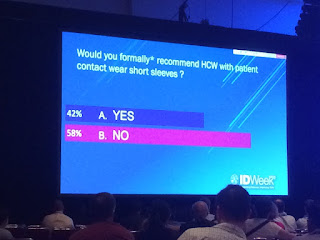 We have had a hand hygiene observation program for years now. On a given week, our hand hygiene adherence is 80% to 90%, by direct observation. But what is the real hand hygiene (foam in / foam out) compliance?
We have had a hand hygiene observation program for years now. On a given week, our hand hygiene adherence is 80% to 90%, by direct observation. But what is the real hand hygiene (foam in / foam out) compliance? First, it is fair to acknowledge that there is no single best way or standard for observing hand hygiene, as we summarize here.
Having said that, it is also fair to say that when we change our hand hygiene observers so that they pass unrecognized for a short period, hand hygiene adherence drops by 10%-15%. This is the Hawthorne Effect, simply, a change in behavior due to a subject's awareness of being observed.
Here is an excellent, recent article on the Hawthorne Effect, published in Infection Control and Hospital Epidemiology. Four important features of the Hawthorne Effect are summarized:
- The Hawthorne Effect follow a time dependent curve
- Behavior changes occur after participants become aware of being watched
- The Hawthorne Effect has performance ceiling
- The performance impact attributable to the Hawthorne Effect wanes with continued observation past peak performance
We are interested in challenging current hand hygiene tracking and monitoring paradigms. Can hand hygiene best practices be promoted and sustained with electronic reminder and monitoring technologies, particularly when done to scale? What will be the staff acceptability and what will be the impact, using a house wide, stepped wedge design roll out, on hand hygiene (performance ceiling, sustainability) and patient centered outcomes across wards and ICUs?
Hand hygiene technologies are limited as they can only (at present) measure foam in/foam out and not all 5 WHO moments for hand hygiene. Regardless, if the implementation of hand hygiene reminder and monitoring technologies is done to scale and sustained, we may learn a lot about engineering a lasting behavior change so as to ultimately have a measure of our real hand hygiene practice.
Stay tuned.
















































